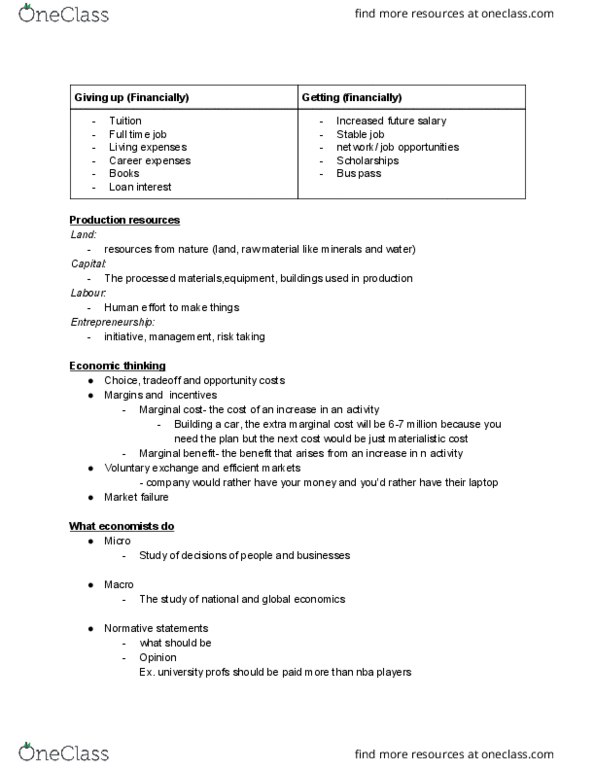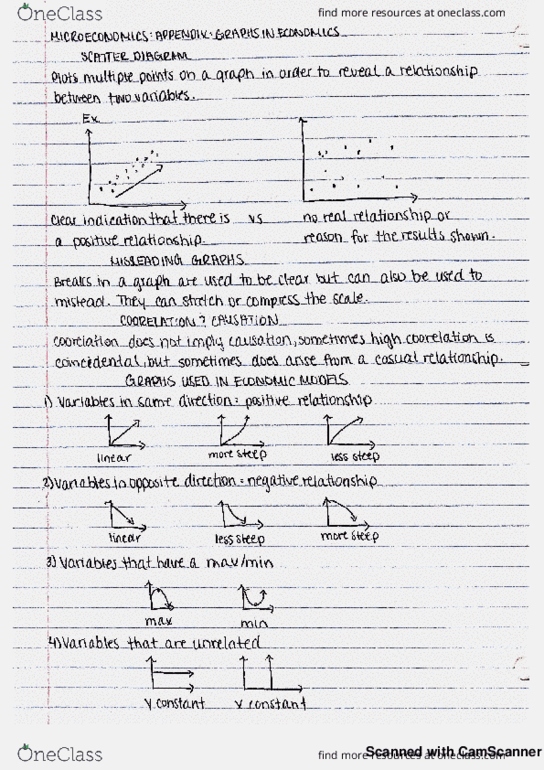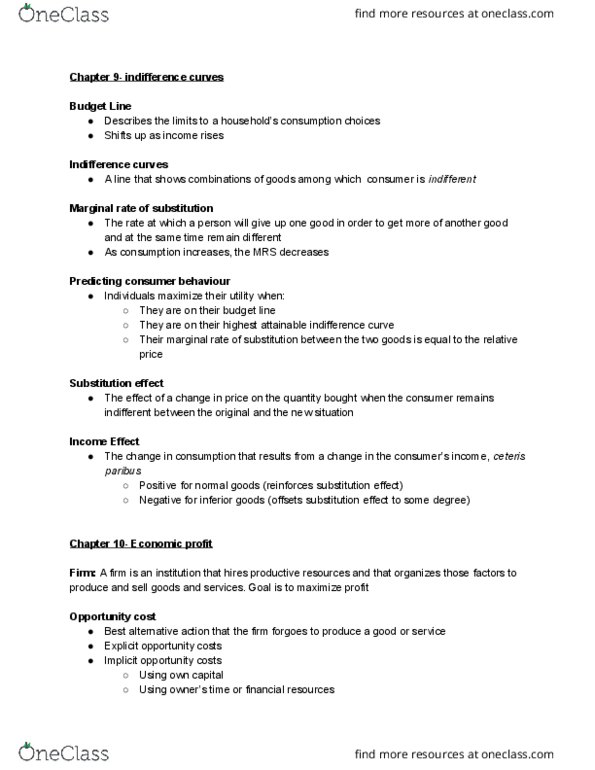Economics 1021A/B Lecture Notes - Lecture 6: Ceteris Paribus, Indifference Curve, Marginal Cost
ECON 1021A/B verified notes
6/6View all
Document Summary
Describes the limits to a household"s consumption choices. A line that shows combinations of goods among which consumer is indifferent. The rate at which a person will give up one good in order to get more of another good and at the same time remain different. They are on their highest attainable indifference curve. Their marginal rate of substitution between the two goods is equal to the relative price. The effect of a change in price on the quantity bought when the consumer remains indifferent between the original and the new situation. The change in consumption that results from a change in the consumer"s income, ceteris. Positive for normal goods (reinforces substitution effect) Negative for inferior goods (offsets substitution effect to some degree) Firm: produce and sell goods and services. A firm is an institution that hires productive resources and that organizes those factors to. Best alternative action that the firm forgoes to produce a good or service.




